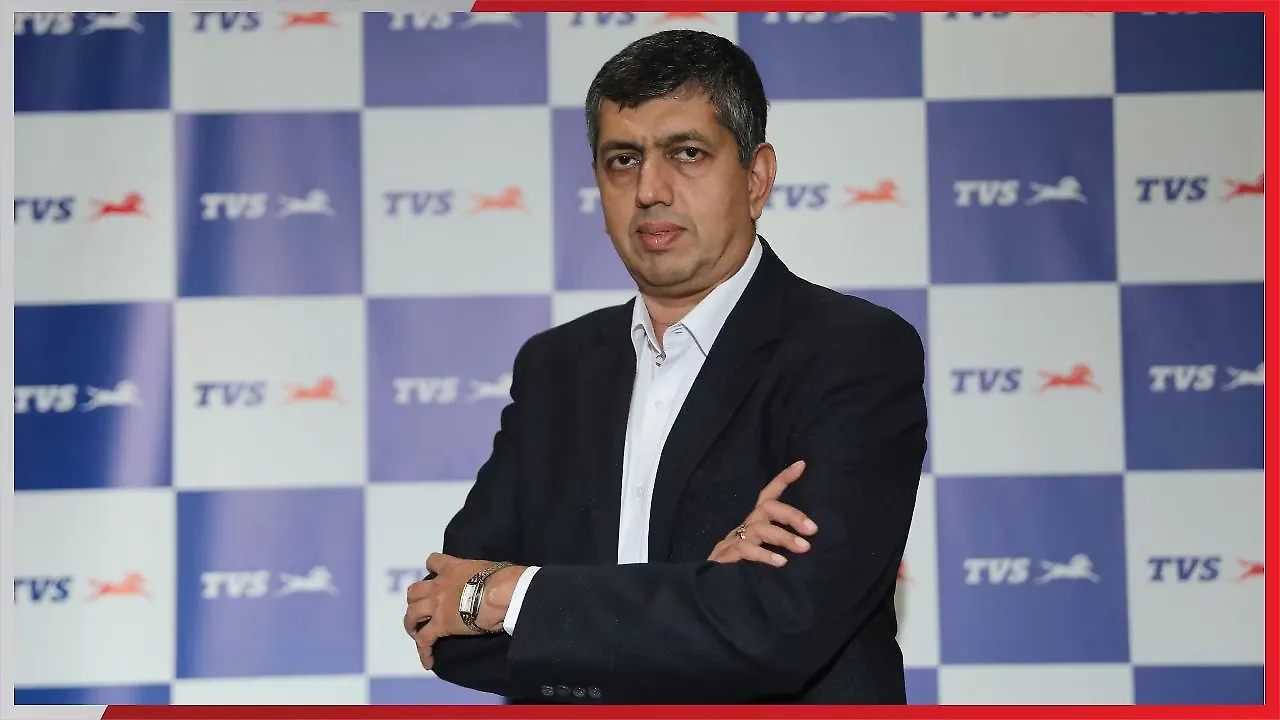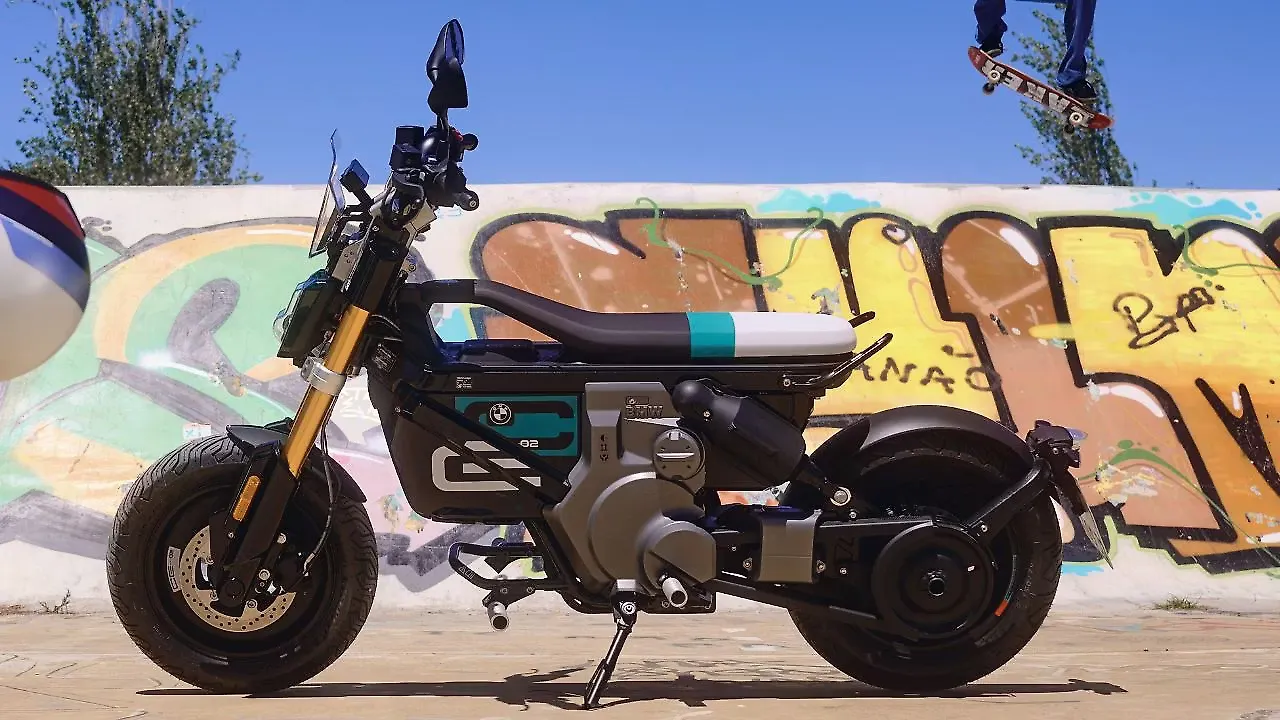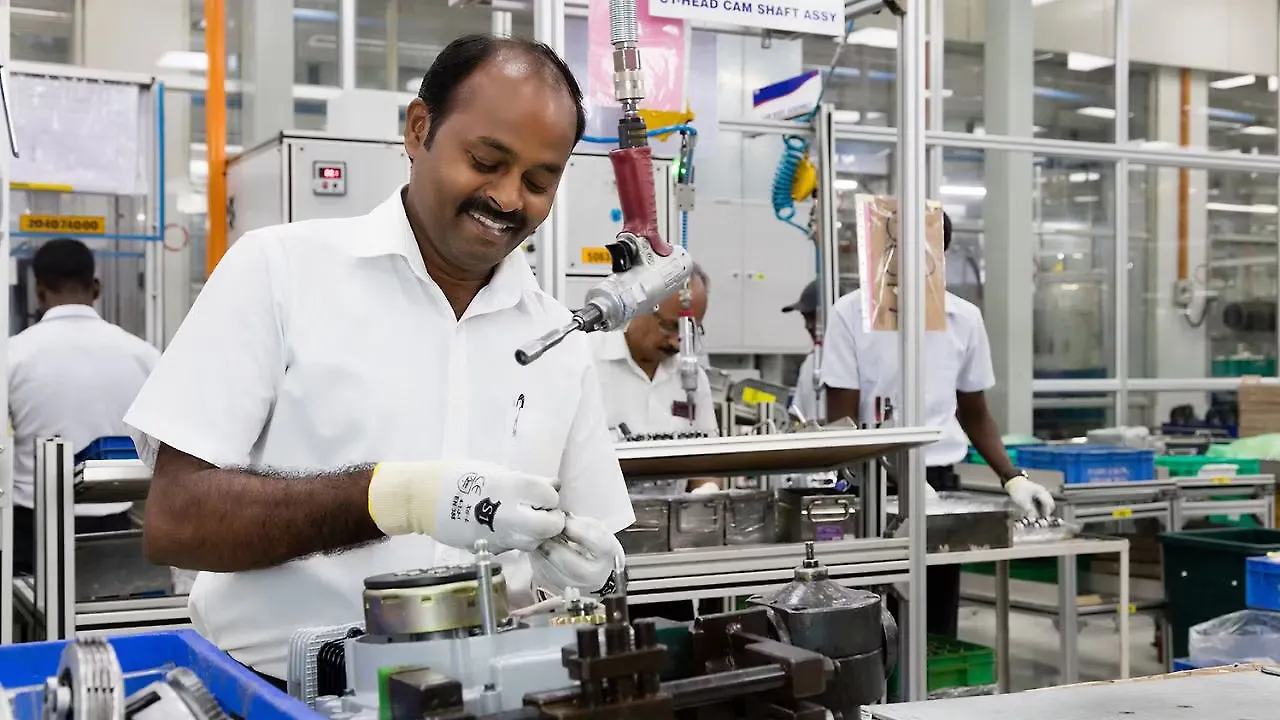
TVS Motor Company is gearing up for a robust future, committing an annual investment of approximately INR 1,500 crore towards product development, with a sharp focus on electric vehicles (EVs).
K N Radhakrishnan, the company’s Director & CEO, shared this ambitious vision while addressing the 64th annual session of the Society of Indian Automobile Manufacturers (SIAM), centred on the theme of achieving global leadership in sustainable mobility.
Radhakrishnan revealed that TVS has already channeled INR 1,500 crore solely into EV development, highlighting the importance of electronics and software in the evolving landscape. He emphasised that India’s vast talent pool, with its expertise in battery packs, traction motors, motor controllers, and software, has played a pivotal role in this journey. “We have partnered with numerous Indian suppliers and are extremely happy with the results,” he said. A highlight of these efforts is the development of the CE 02 electric scooter in collaboration with BMW, a testament to India’s rising capability in global EV innovation.
Looking ahead, he expressed confidence in India's potential to become a global leader in sustainable mobility, as the country's GDP per capita continues to grow.
TVS Motor has strategically invested in flex-fuel technologies, and it is poised to launch a diverse range of products catering to various customer segments. “These innovations are not only benefiting Indian society but are also elevating the Indian brand on the global stage. Currently, 30% of our business comes from international markets, but with the advancement of electric vehicles and cutting-edge technologies, we see tremendous potential to expand beyond developing markets into developed economies as well. This presents an exciting opportunity for India's two-wheeler manufacturers to make a significant impact on the global mobility landscape,” he said.

Globa Leadership
Achieving global leadership in sustainable mobility is both a challenge and an opportunity, and “I am proud to say that the Indian two-wheeler industry is already on the path to global prominence,” he said. The vision is clear and aligned—not just to dominate the Indian market, but to seize the vast potential that lies in expanding internationally. Indian-branded two-wheelers are poised to shine on the global stage, thanks to the collective efforts and leadership within the industry.
As a key player, the company fully supports the government’s vision of achieving net zero emissions by 2070. However, “this is not a goal we can reach in isolation; it requires collaboration between manufacturers, the government, and most importantly, a customer-centric approach. Every decision must be made with the customer at the heart of it, ensuring that their needs and expectations guide our journey towards sustainable mobility,” he noted.
In the two-wheeler and three-wheeler segments, self-reliance is about more than just manufacturing—it’s about leading in design and development, too. For India to maintain its leadership, the industry must invest heavily in developing its own technologies and nurturing talent. This requires an ecosystem of continuous learning, with investments starting from educational curriculums to ensure “we are building the technological foundations needed for the future,” he mentioned.
India's policy framework promotes a variety of sustainable technologies—electric vehicles, biofuels, gas-based systems, and hydrogen-powered solutions—but the ultimate choice lies with the customer. They remain technology-agnostic, making decisions based on their specific needs and total cost of ownership. “Our responsibility as manufacturers is to offer them a range of options, empowering them to choose what best suits their lives while supporting the broader goal of sustainability,” he noted.

Best Supply Chain
From both the government's perspective and that of the industry, the path to achieving net zero by 2070 demands a multifaceted approach. One of India’s greatest strengths lies in its world-class supply chain, a foundation the OEMs must leverage as they move forward. Equally important is fostering material circularity—an area where it is just beginning to make strides, but “I am confident India will soon lead. To this end, significant emphasis must be placed on reducing the environmental impact of automotive manufacturing, from material extraction to the increased use of recycled materials. These steps are critical as we confront the challenges of the climate crisis and the rapid pace of urbanization,” he said.
India’s demographic transformation presents immense opportunities. Today’s rural landscapes are evolving into tomorrow’s semi-urban and urban centres, creating vast potential in the automotive market. However, speed is essential—a factor where India still lags behind. “While we are meticulous in quality and customer focus, we must now cultivate agility and speed to truly lead, particularly in the realm of sustainable mobility,” he explained.
Another cornerstone of future success is innovation. “We cannot simply import and adopt foreign technologies that may not suit our unique needs. Instead, we must nurture homegrown innovations tailored specifically to our country’s context. Not every innovation will be a guaranteed success, but this requires substantial investment—in capital, resources, and, most importantly, in people. Only through fostering a culture of innovation can we hope to achieve global leadership in sustainability,” he added.
Also Read: